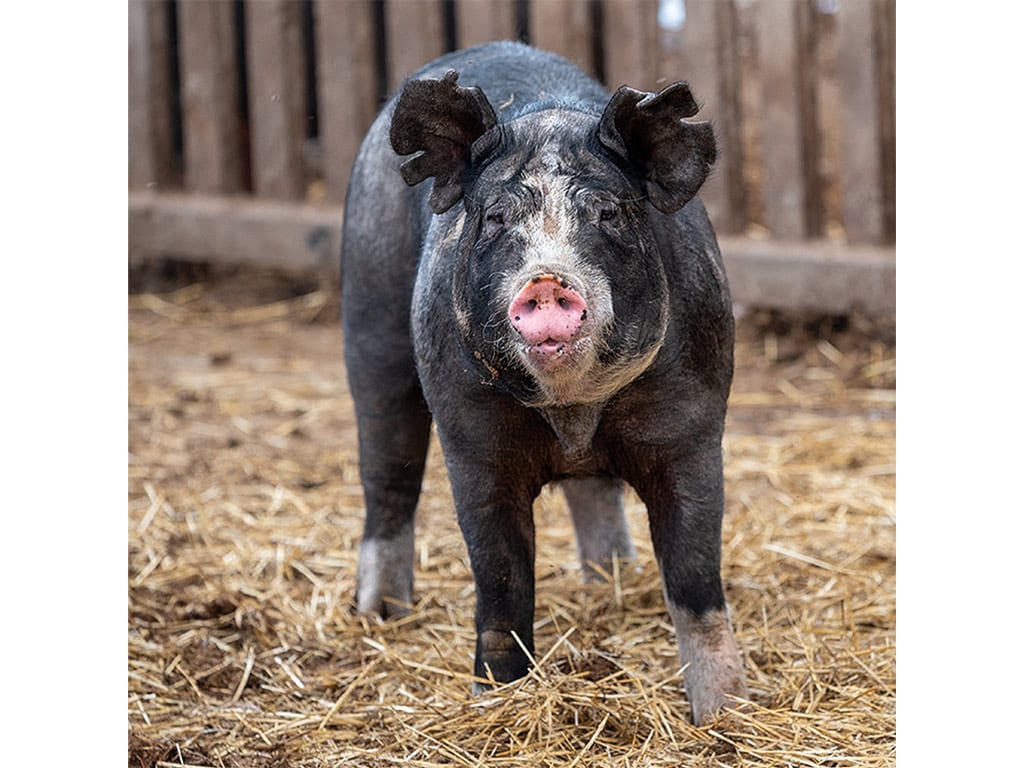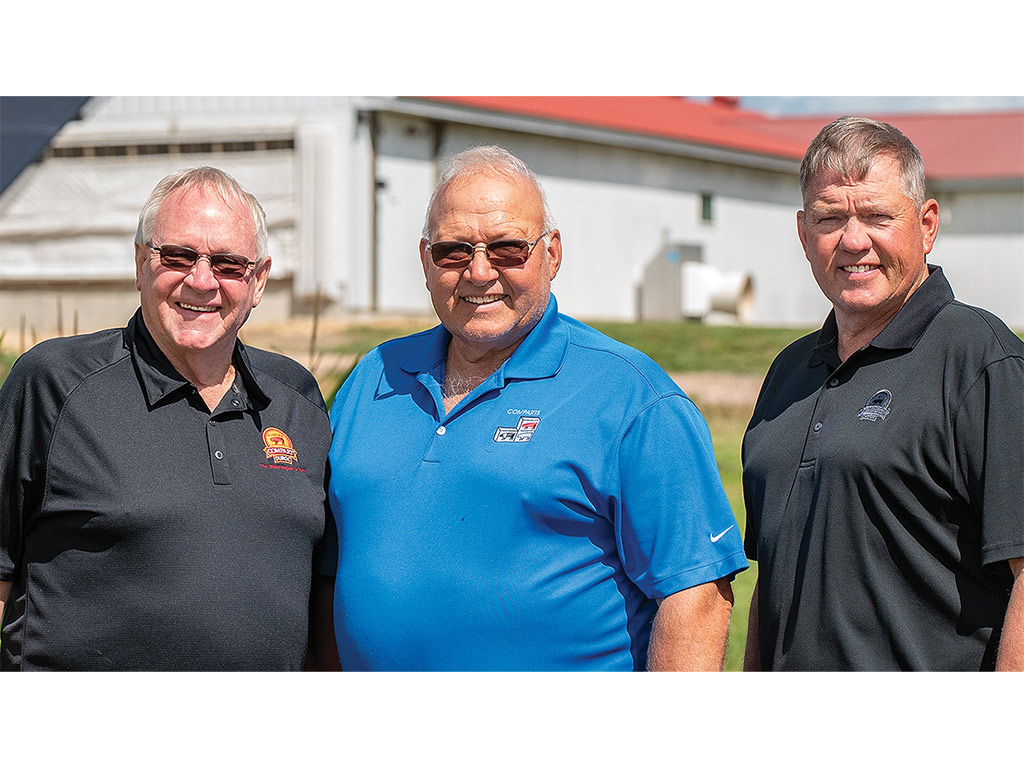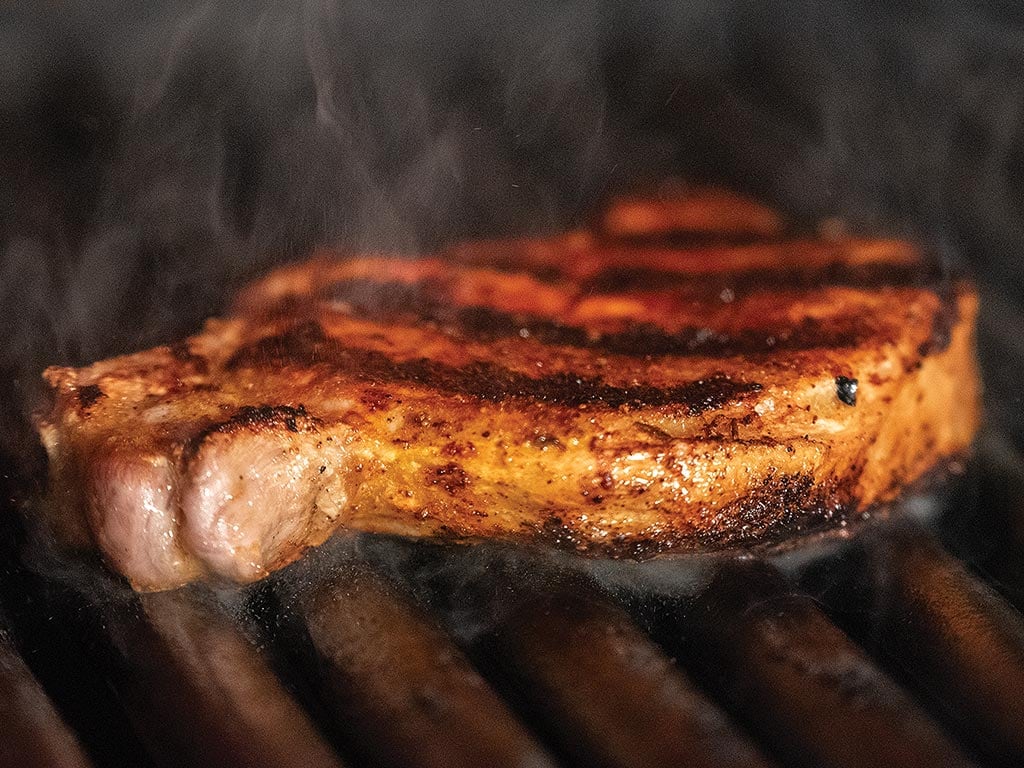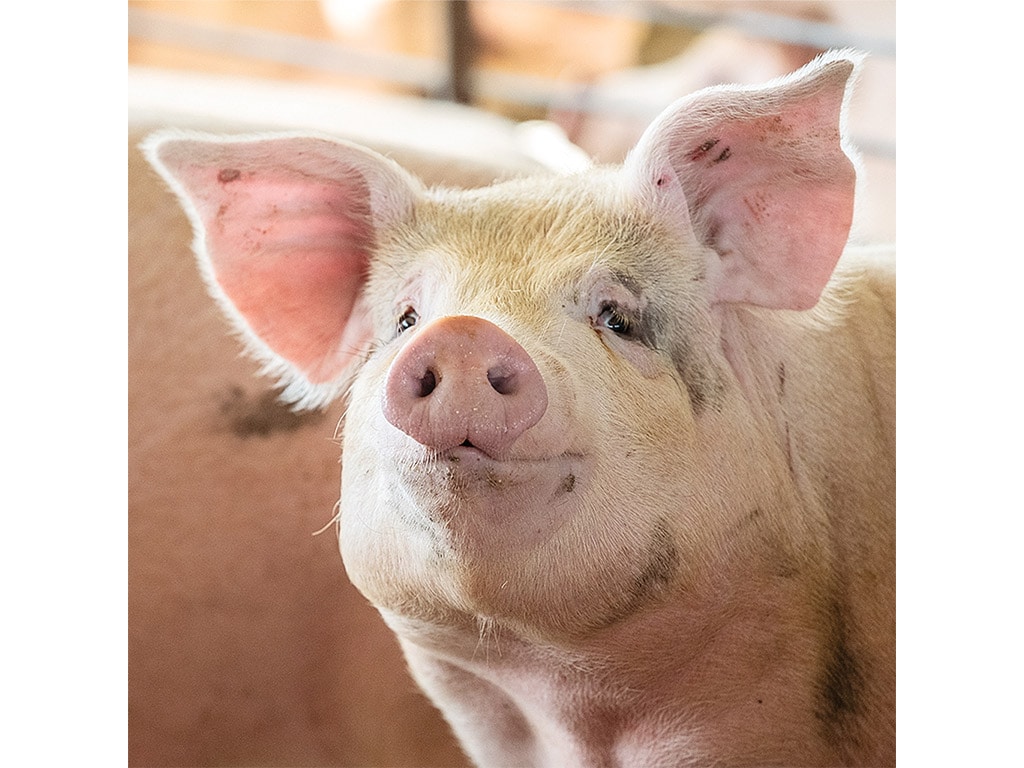Agriculture, Livestock/Poultry April 01, 2025
Masters of Marbling
Raising the bar on pork flavor and tenderness.
by Katie Knapp
The server slips between the white-clothed tables with a cart full of the evening's cut options. Amidst the expected beef selections are dry-aged pork chops deserving equal attention of diners at one of Minneapolis's top steakhouses. Their bright reddish pink color dappled with the perfect amount of marbling glistens next to their steak counterparts.
"Sure, people come here mostly for steak, but the other options have just as much flavor and are also the top of the range," says Jason Smith, Manny's Steakhouse executive chef. What the contrarian who opts for pork at a steakhouse likely doesn't know is the farmers who raised it have been making those same 'different' decisions for decades.
The pork chops served at Manny's come from nearby Compart Family Farms. "It all started when Dad bought two Duroc gilts and a boar to show in 4-H in 1949. He wanted something different than the regular pig everyone else had," Jim Compart proudly explains. Some 70 years later, he and his brothers have built up the family business based in Nicollet, Minn., from those genetics.
They have been breeding animals to have more marbling and higher pH which translates to sweeter, more tender meat for a better eating experience.
By the mid 1990s the Compart family was selling genetics as well as a few trailer loads of finished pigs straight to a packer. Jim Compart remembers the day in 1998 they lost their commodity contract. The American pork industry was looking for lean, light-colored meat to fit the tagline 'the other white meat.' That wasn't what the Comparts were raising. While other producers might have seen disaster, Jim and his family saw opportunity.
"We knew the science. We knew the meat quality traits," he says, referencing what the Asian market also believed of fat and meat quality from darker haired breeds like Duroc and Berkshire. Instead of fighting a losing battle with the packer, they started their own branded-pork program and went straight to the table. "We went to the finest restaurants in the world," Jim says, a little disbelief sneaks through in his expression as he recalls their risky boldness.
In the early 1980s in central Illinois, Randy Tuthill started raising Berkshire pigs for the same reason Comparts got into Durocs. "I wanted to win at the fair, so I picked Berkshires because no one else had them," Randy recalls, now quite happy he chose a breed that is also known for superior meat quality. What began in the Stark County show ring quickly evolved into international breeding stock sales, with his pigs eventually finding homes from Korea to Russia.
When global markets shifted and his son Cade was back on the farm after college, they adapted by adding a domestic feeder pig program supplying specialty producers focused on pasture-finished pork.
Above. Jim, Dean, and Chris Compart check one of their Nicollet County, Minn., barns full of Duroc-cross pigs. Chops from one will likely soon end up on the grill at Manny's Steakhouse in downtown Minneapolis.
Survival of the tenderest. The shift toward quality for farmers like these isn't just about taste—it's also about survival. As Dave Weaber, senior animal protein research analyst with Terrain (an ag economist team serving customers of multiple Farm Credit Associations) notes, pork demand continues sliding while beef thrives through quality improvements. "Beef demand during the last 25 years has been built on quality," he observes.
Weaber admits he regularly digs through the local retailer's meat cooler for a pork loin with rich marbling and bright pink color because he knows it's out there. The general consumer—unlike the trained meat economist he is—doesn't yet know darker pork is better. One key problem is pork isn't graded on those characteristics like beef is.
"The industry has to find a way to pay producers for quality improvements," Weaber says. Certified Angus Beef's success proves consumers will seek out the higher quality meat.
Bucking the lean trend, both families have stayed focused on raising animals that deliver superior flavor. The result is products that command premium prices in high-end restaurants and specialty markets.
Perhaps most importantly, their quality-focused approach is creating opportunities for the next generation. By building sustainable businesses based on premium products, these farmers are ensuring ag remains an attractive career for their children.
Back in the restaurant, this time Chicago White Sox's stadium clubhouse, Randy's eyes light up when he realizes the meat he raised is on the menu. "I was so excited; I didn't know who I should call first." ‡
Read More

AGRICULTURE, FARM OPERATION
Why Wheat Works
A cereal grain adds agronomic diversity to crop rotations.

EDUCATION
John Deere Historic Site
Where it all began in Grand Detour, Illinois.





